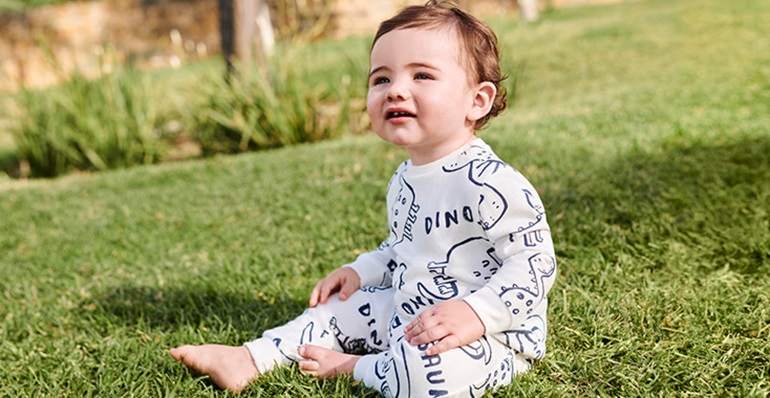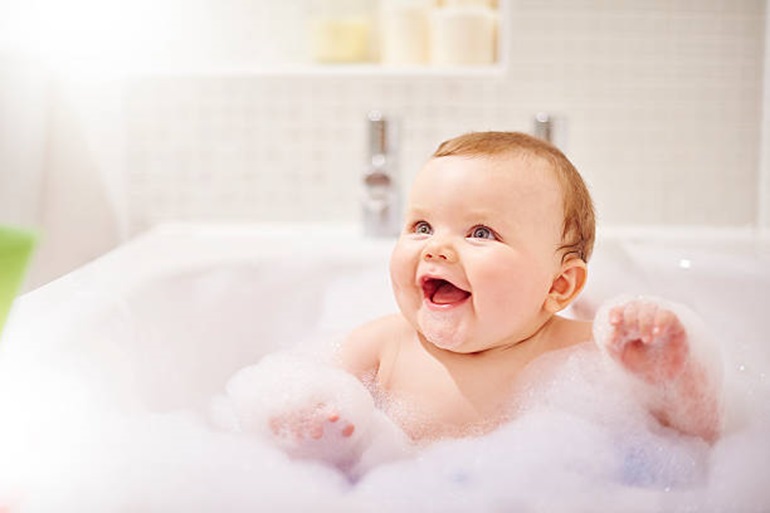One thing we know about babies’ skin is that it’s soft and smooth, but also fragile and sensitive by nature. Unfortunately, quite often, this sensitivity can lead to the appearance of dryness. While it can be temporary and pass quickly in most cases, some skin types are far more sensitive than others. In cases like that, the dryness is often the result of eczema, which can be quite difficult to manage.
Causes and Symptoms of Dry Skin in Babies

While the environment and genetics play a major role in having dry and eczema-prone skin, quite often the main problem for this is the disruption to the skin barrier. The outer layer is made from cells that are layered and held together by ceramides, lipids and fatty acids which act as a barrier that prevents moisture loss. This barrier is also great at protecting the inner layers from dirt, pollution and bacteria, keeping it safe and sound.
For better or for worse, the skin barrier in babies is thinner than the one adults have, making it more fragile which is why dryness is more common in babies. One of the most common symptoms of this condition is having dry patches on the face, hands and some other parts of the body. You can also notice that the baby’s skin is tough-textured, peeling, flaky and dull-looking.
Ways to Prevent Irritation and Dryness
Dress Your Little One with Organic Cotton Clothing
Dressing babies in natural materials is one of the first things you should do once your baby arrives. And while merino wool certainly is one of the comfiest natural fibres, the truth is that it isn’t recommended for children with dry and eczema-prone skin. The main reason is that wool isn’t as soft as cotton and can irritate them even more, resulting in severe itchiness, redness and dryness.
The best fabric option for children with dry and eczema-prone cases is to wear clothes made from cotton and organic cotton. Luckily, these days it’s extremely easy to find both girl and boy clothes that are soft, gentle and comfortable without compromising on style, models and appearance. Babies’ girl and boy clothes made from cotton are also breathable, hypoallergenic, antimicrobial and can absorb sweat which is key to preventing irritation.
Clothes made from cotton are also more breathable compared to many synthetic materials. They allow air to circulate, leaving the skin dry and reducing the risk of overheating. This, on the other hand, will reduce sweat and moisture buildup on the skin which is great for reducing the chances of worsening the dryness.
If possible, it would be better to choose clothes made from organic cotton because this material is better than regular cotton. The main reason for this is that organic cotton isn’t treated with any colours, chemicals and synthetic dyes which may irritate more the already irritated skin.
One last thing you should take into account when choosing the right children’s clothes is to choose loose-fitting clothes. Avoid choosing too tight and close-fitted clothing pieces and choose looser because that way you won’t only reduce irritation but you can reduce the symptoms of dry and irritated skin as well.
Use a Gentle Cleanser
The type of clothes and their fabric certainly contribute to keeping dryness at bay, but skincare also plays a crucial role in the equation. Instead of choosing any heavenly-smelling body wash, you should stick to gentle formulas that nourish their moisture barrier.
You should avoid using any perfumed body cleansers even if the perfume comes from natural origin. In fact, the list of products you should avoid in skincare is larger, so make sure to choose the cleanest possible products for your little one. Supporting and preventing dryness in babies is essential and this can be done by choosing hydrating cleansers that are gentle, purifying and moisturising.
Reduce Bath Time

Speaking of cleansers, you should reduce bath time to a maximum of 10 minutes and only 2-3 times per week, unless your little one gets really messy and you have to do it. You should also avoid using water that’s too hot because this can strip any natural oils from the skin and make it even drier. For that reason, it’s best to bathe your baby with lukewarm water and gentle cleanser.
Moisturise the Skin
The last thing you should do to keep your little one hydrated is to apply protective and nourishing body cream or lotion. If not applied regularly, this can make your little one develop dry patches which if not treated can become red, itchy and painful.
Applying a moisturiser is the best you can do, but just like when choosing a cleanser, the moisturiser should also be free from any chemicals, toxins, fragrance, alcohol and parabens. Apply gently after bath time and reapply during the day, especially in the drier areas.

